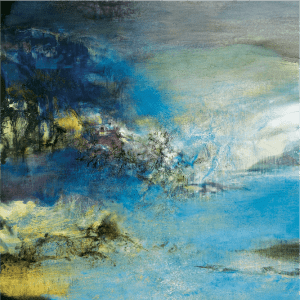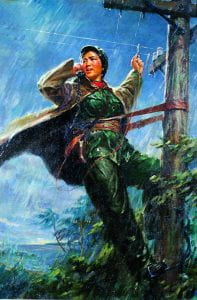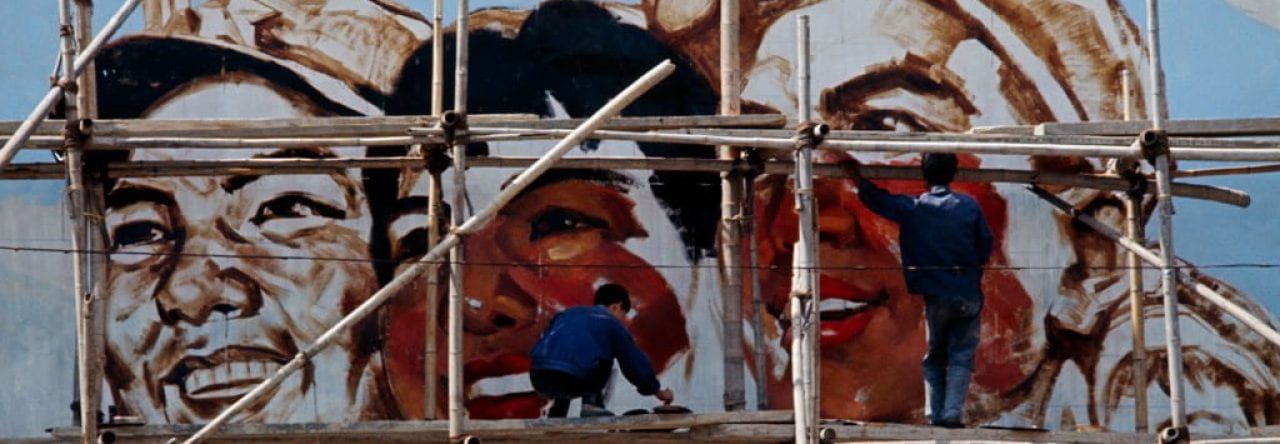Artist
Zao Wou Ki (1920-2013) was a Chinese-French painter. After studying at CHina Academy of Arts in Hangzhou, he moved to Paris to pursue his career in arts. He is known for his abstract paintings, although he occasionally drew landscapes and even created some potteries. What really stood out to me about Zao was his “obsession” with abstract art. I have decided to focus on this form of art, because I thought comparing this to socialist realist paintings will really capture the transition from an oppressive period in the art world (in China) to a more free period.
Background information and Significance of Abstract Art
After the end of the Cultural Revolution marked by Mao’s death, artists in China were now able to paint whatever they wanted, instead of being forced to paint socialist realist paintings. Although there were still some restrictions on the type of artwork that could be posted publicly, this transition led to many artists to try different forms of art, some shown in China Avant-Garde Exhibition: No U-Turn In Beijing (1989).
Understanding how art styles have changed during the period of change is important, and to understand the transition in art styles it is important to realize different forms of art that emerged, such as in the “New Literati Movement-文人藝術”. This movement was led by Western-influecenced artists and sought to create a new form of art that reflected their contemporary world (Negotiating histories: Traditions in Modern and Contemporary Asia-Pacific Art, 2013). The exhibition will showcase one particular theme of art – Abstraction with respect to Zao Wou Ki, although other abstract artists during this time will be mentioned.
Types of Art to be included in the Exhibition
The plan is to have 2 abstract paintings from Zao, 2 abstract artworks from other abstract artists (Wu GuanZhong-painting and Li Huasheng-sculpture) during that time, and 1 socialist realist painting. Here are the artworks:





In order:
[Zao Wou Ki – 04.01.82, 1982]
[Zao Wou Ki – 18.03.2008, 2008]
[Wu Guanzhong – Water village (1982)]
[Li Huasheng – 0112 (2001)]
[Pan Jiajun – I am Seagull (1971)]
Bibliography
Kikuchi, Yuko. “Recentering Craft in Postmodern and Postcolonial rewriting of Visual Cultural History.” (2013).
Art inspired by the cultural revolution. Phaidon. https://www.phaidon.com/agenda/art/articles/2017/may/16/art-inspired-by-the-cultural-revolution/ accessed May 11, 2023.
Li Huasheng. Artsy. https://www.artsy.net/artwork/li-huasheng-li-hua-sheng-0112 accessed May 11, 2023.
Oils Paintings Thumbs. Zao Wou Ki Foundation. https://www.zaowouki.org/en/the-artist/works/oils-paintings-thumbs/ accessed May 11, 2023.
Wu Guanzhong – Water Village (1982). The China Online Museum. https://www.comuseum.com/product/wu-guanzhong-water-village-1982/ accessed May 11, 2023.


Leave a Reply
You must be logged in to post a comment.